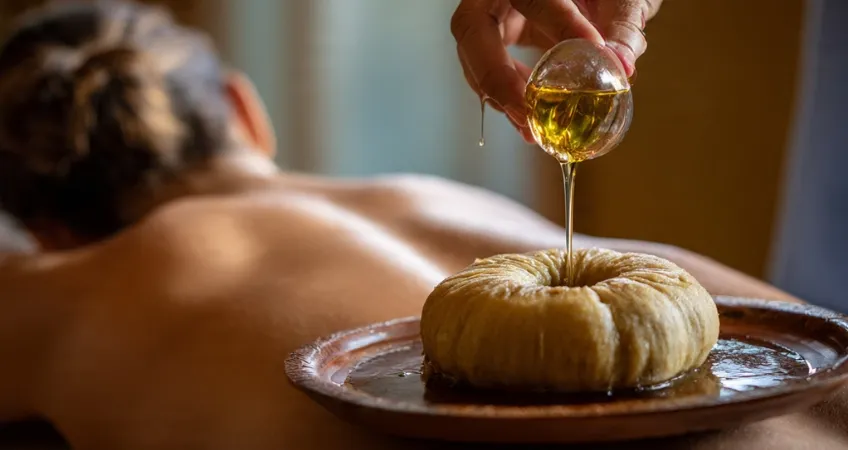Early autumn is an excellent time to start joint health therapies. Cooler temperatures help reduce inflammation and encourage increased mobility. Autumn’s crisp air promotes outdoor activities, which enhance muscle strength and joint lubrication. However, seasonal changes may lead to discomfort for some, making proactive management essential. Nutrient-rich foods available this season can further support joint function. Exploring more about these approaches can provide valuable insights into maintaining joint health during this shifting period.
The Benefits of Cooler Weather for Joint Health
As autumn arrives and temperatures drop, many individuals experience relief from joint discomfort, suggesting that cooler weather can be beneficial for joint health. Research indicates that lower temperatures may lead to reduced inflammation, which is often a contributing factor to joint pain. The crisp air encourages less swelling in the synovial fluid, providing a more comfortable range of motion. Additionally, humidity levels tend to stabilize in the fall, further alleviating pressure on joints. For those looking at holistic care, consulting the best Ayurvedic doctor in Hyderabad can help in aligning seasonal advantages with customized therapies.
Increased Outdoor Activity and Its Impact on Mobility
With the arrival of autumn, many are motivated to take advantage of the cooler weather through increased outdoor activities. Engaging in activities such as hiking, biking, or brisk walking not only strengthens muscles but also improves flexibility and range of motion. The rhythmic motion of exercise promotes synovial fluid production, which lubricates joints and reduces stiffness. If discomfort persists, opting for specialized Ayurvedic treatment for joint pain in Sainikpuri can ensure a balanced approach to mobility and long-term joint care.
Seasonal Changes and Their Effect on Joint Discomfort
Although cooler temperatures in autumn can encourage outdoor activities, they may also trigger joint discomfort for some individuals. Fluctuating barometric pressure and humidity levels can exacerbate inflammation and sensitivity in joints. Stiffness and pain often surface as the body adjusts to the seasonal shift. A preventive route such as Ayurvedic treatment for joint pain Jubilee Hills ensures the body adapts better to these weather transitions with reduced discomfort.
Nutritional Support for Joint Health in Autumn
Seasonal changes not only affect joint discomfort but also highlight the importance of nutrition in maintaining joint health during autumn. As temperatures drop, individuals can leverage the seasonal bounty of nutrient-rich foods to enhance joint function. Incorporating omega-3 fatty acids from walnuts and flaxseeds, along with antioxidants found in vibrant autumn fruits like apples and pears, can support inflammation reduction. Additionally, root vegetables such as sweet potatoes and carrots provide essential vitamins and minerals that contribute to cartilage health. Emphasizing a diet rich in these innovative foods can empower individuals to proactively nurture their joints. By making strategic dietary choices this autumn, one can forge a strong foundation for long-term joint health and resilience against seasonal challenges.
Establishing a Sustainable Joint Health Routine
As autumn settles in, establishing a sustainable joint health routine becomes essential for individuals seeking to maintain ideal mobility and comfort. A proactive approach involves integrating innovative therapies such as low-impact exercises, which enhance flexibility and strength without excessive strain. Incorporating cutting-edge supplements, rich in omega-3 fatty acids and antioxidants, can further support joint function. Additionally, mindfulness practices, such as yoga or tai chi, foster both physical and emotional well-being, promoting resilience against seasonal changes. Tracking progress through digital health applications empowers individuals to customize their routines based on real-time feedback. This holistic strategy not only addresses immediate joint concerns but also lays a foundation for long-term health, enabling individuals to embrace the vibrant activities autumn offers with renewed vigor and confidence.
Frequently Asked Questions
- What Types of Joint Health Therapies Are Most Effective in Autumn?
Various joint health therapies gain traction in autumn, emphasizing innovative approaches. Nutritional supplements like omega-3 fatty acids and glucosamine are effective in reducing inflammation and improving mobility. Additionally, physical therapies, including targeted exercises and hydrotherapy, enhance joint function. Emerging treatments such as regenerative medicine, including platelet-rich plasma injections, offer promising results. Combining these therapies can optimize joint health, making autumn an ideal time for individuals seeking to enhance their joint well-being.
- How Can I Identify Early Signs of Joint Discomfort?
Identifying early signs of joint discomfort involves observing subtle changes in mobility and sensation. Individuals may notice stiffness during movement, swelling around the joints, or mild pain during physical activity. Additionally, a decreased range of motion or unusual fatigue can signal underlying issues. Recognizing these signs early allows for timely intervention, fostering an innovative approach to joint health that prioritizes proactive management and enhances overall well-being before discomfort escalates.
- Are There Specific Supplements Recommended for Joint Health in Autumn?
In addressing the question of specific supplements for joint health in autumn, experts often recommend glucosamine and chondroitin, known for their supportive role in cartilage maintenance. Omega-3 fatty acids, found in fish oil, may help reduce inflammation. Additionally, curcumin, derived from turmeric, is noted for its anti-inflammatory properties. As the seasons change, incorporating these supplements could enhance joint health and overall mobility, fostering innovative approaches to wellness during the cooler months.
- How Long Does It Take to See Results From Joint Health Therapies?
The timeline for observing results from joint health therapies can vary greatly among individuals. Typically, noticeable improvements may emerge within four to six weeks, depending on the therapy’s nature and the individual’s specific condition. Innovative approaches, such as tailored supplements and cutting-edge treatments, may expedite this process. Factors such as adherence to the regimen, lifestyle choices, and overall health also play vital roles in determining the speed of noticeable benefits.
- Can Weather Changes Affect Joint Pain Differently in Individuals?
Weather changes can greatly affect joint pain, varying widely among individuals. Some may experience heightened discomfort during damp, cold conditions due to increased barometric pressure, while others might find warmth alleviating. This disparity suggests a complex interaction between personal health, environmental factors, and joint health therapies. Understanding these nuances can drive innovation in treatment approaches, tailoring therapies to align with individual responses to shifting weather patterns, ultimately enhancing overall joint health management.












